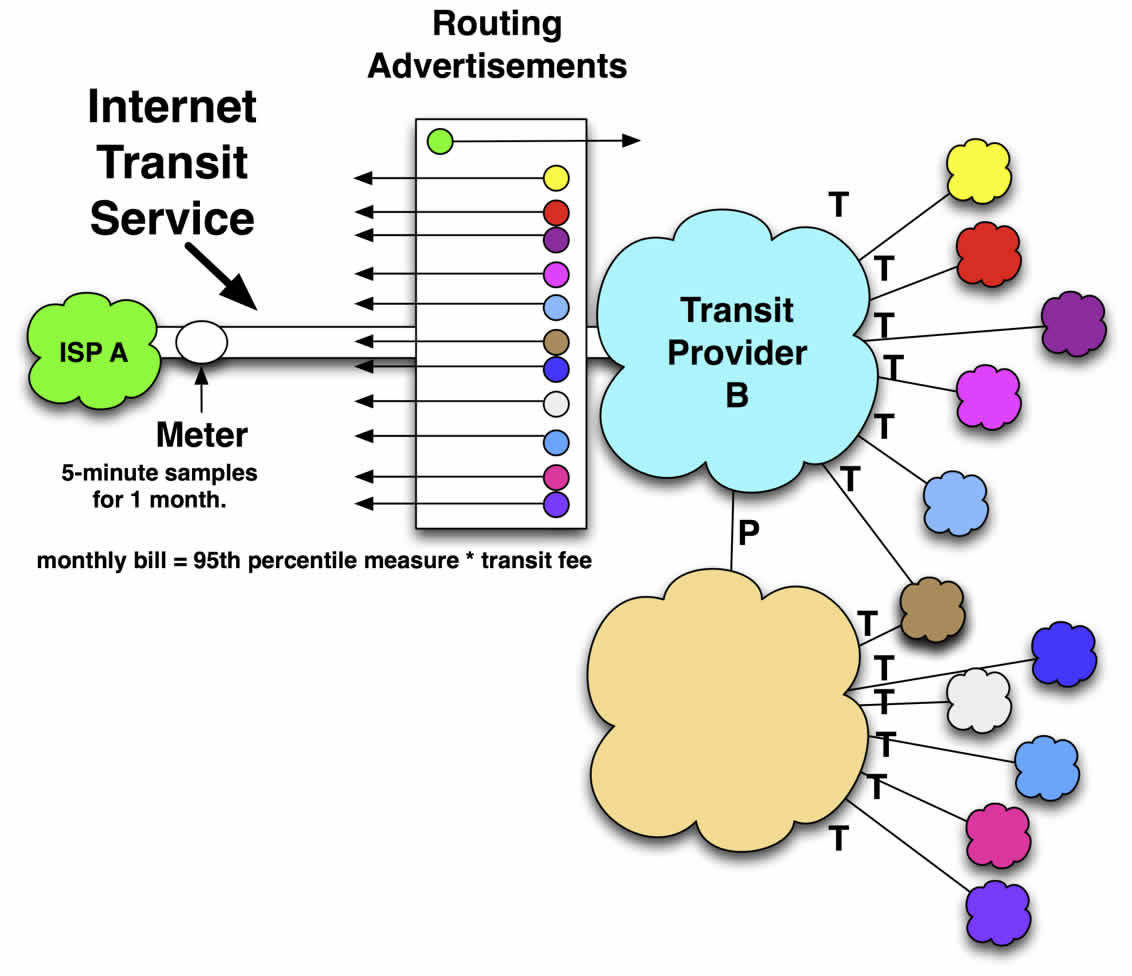In this page we introduce the definitions and the Internet Transit service model.
The Internet is a network of networks.
To get connected to the Internet, an entity must attach itself to an entity that is already connected to the Internet. It usually accomplishes this connection by purchasing a service called "Internet Transit".
Definition: Internet Transit is the business relationship whereby an Internet Service Provider provides (usually sells) access to the global Internet.
From a high-level perspective, Internet Transit can be thought of as a pipe in the wall that says "Internet this way". Customers connect their networks to their Transit Provider, and the Transit Provider does the rest.
Definition: An Internet Service Provider (ISP), also called a "Transit Provider," is an entity that provides (usually sells) access to the Internet.
The primary business of an Internet Service Provider is to market, sell, and operate the Internet Transit service described next.
The Internet Transit service has two primary functions:
1. to announce Internet routes to the customer, and
2. to announce the customer routes to the rest of the Internet
To illustrate, consider a customer (ISP A) purchasing the Internet Transit service from Transit Provider B as shown in the figure below
.
We use graphical notations throughout the Internet Peering Playbook. The different colored clouds represent networks attached to the Internet. The ‘T’ next to a line represents an Internet Transit relationship. The routing advertisements box describes which routes are “announced” between the Internet Transit customer (ISP A) and the upstream Transit Provider B. The arrows signify the direction of the routing announcement.
These routing announcements are propagated across the Internet. Transit Provider B announces to the ISP A the routes to reach the entire Internet (shown as many colored networks to the right of the Transit Providers). The ISPs across the Internet propagate this ISP A route so that all networks know how to reach the ISP A.
The Internet Transit service is typically a metered service outside of the residential market. The unit price for Internet Transit services varies widely, but the service itself is typically priced on a per-megabit-per-second (Mbps) basis, metered using the 95th percentile traffic sampling technique.